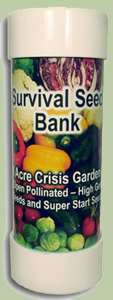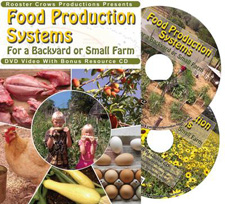 |
| Wiki Image |
Dr. Mercola
Mercola
In 2009, the U.S. federal government paid $12.3 billion to America’s farmers. Even as farmers profit from increased demand, the government remains a major player in the food business.
The Atlantic has put together a list of the top nine products that the government most heavily subsidizes:
1. Corn
2. Wheat
3. Soybeans
4. Rice
5. Beer
6. Milk
7. Beef
8. Peanut Butter
9. Sunflower Oil
Corn, at the top of the list, raked in over $77 billion from the government between 1995 and 2010, and the subsidies have only been going up. There’s a common belief that healthy food is inherently more expensive, and thus can only be for the wealthy. But in fact, healthy food could easily be more affordable for everyone, if not for agribusiness CEOs, their lobbyists and the politicians in their pockets.
Lawmakers whose campaigns are underwritten by agribusinesses use billions of taxpayer dollars to subsidize the commodities that are the key ingredients of unhealthy food — corn, soybeans, wheat, etc. This manufactured price inequality helps junk food undersell nutritious food.
According to Salon:
“Corn — which is processed into the junk-food staple corn syrup … — exemplifies the scheme … [I]t is a bargain, but one created by deliberate government policy that serves the corn industry titans, not by any genetic advantage that makes corn derivatives automatically more affordable for the budget-strapped commoner.”
The Environmental Working Group (EWG) also released its 2011 Farm Subsidy Database, although the USDA has reportedly refused to release all the data to confirm exactly who the billions in farm subsidies are being paid out to. Still, as EWG stated:
” … despite lawmakers’ boasts of enacting major reforms in the 2008 farm bill, the new data clearly show that wealthy absentee land owners and mega farms awash in record income are once again the main beneficiaries of federal farm programs – while struggling family farmers go begging.
And once again, the database shows that many farm subsidy recipients get those fat government checks at addresses in New York City, Miami, Chicago and Los Angeles – not exactly farm country, and a far cry from the programs’ original intent”.
Sources:
The Atlantic July 12, 2011
Salon July 15, 2011
Environmental Working Group June 23, 2011
Environmental Working Group 2011 Farm Subsidy Database
Dr. Mercola’s Comments:
You’re probably well aware that it’s typically cheaper to buy a loaf of bread than a pound of broccoli or even a pound of ground beef than a similar amount of green peppers. And most people also realize that they can get a value meal at numerous fast-food restaurants for far less money than it takes to purchase foods to make a healthy meal, such as organic chicken and fresh veggies, for their family.
Perhaps this disparity has struck you as odd. After all, what makes vegetables more expensive than bread or meat? It’s clearly nothing inherent to their growing requirements.
Not at all.
Instead, it’s the direct result of government food subsidies, which favor the very foods you should eat less of if you want to stay healthy.
The Government is Subsidizing a Fast-Food, Illness-Causing Diet
As you can see in the list above, the U.S. food subsidies are grossly skewed, creating a diet excessively high in grains, sugars, and factory-farmed meats. Notice the omission of vegetables or healthy fats from nuts and seeds. Is it a coincidence that the number one source of calories in the United States, high-fructose corn syrup (HFCS) in soda, is made from the most heavily subsidized crop — corn?
I think not.
HFCS is pervasive and in many processed food items you would never expect, including diet foods and ‘enhanced’ water products. Even most infant formulas contain the sugar equivalent of one can of Coca-Cola! But you see, U.S. farmers are growing an obscene amount of corn — 13 billion bushels on more than 80 million farmland acres — and industry has found a way to make use of it.
Of course, they are not growing all of this corn because Americans can’t get enough corn on the cob … they are growing it because the government pays them to, to the tune of more than $77 billion a year to produce corn as a raw material that can be processed into “food.” You could not eat most of the GMO corn that is grown in this country unless it is processed at the factory into something that tastes better.
Government subsidies have also allowed corn to become a staple in many foods and animal feeds.
Why would a farmer choose to plant lettuce or Swiss chard when the government will essentially “insure” their corn crops, paying them back if the market prices fall below a set floor price? Likewise with wheat and soybeans, the second and third most heavily subsidized crops, respectively.
Most of them wouldn’t … and that’s why the U.S. diet is so heavily loaded with foods based on the surplus, nutritionally devoid crops of corn, wheat and soy. One of the effects of the farm bill is to create a negative feedback loop that perpetuates the highly profitable standard American diet.
Unfortunately, the government is showing no signs of subsidizing vegetables the way they do corn, grain and pasteurized milk. This is most like a result of the Department of Agriculture’s deep alignment with agri-business. Current legislations protect the profits of these large industries at the expense of public health. This may surprise you, but the agriculture lobby is more powerful than even the pharmaceutical industry! As if this isn’t all frustrating enough, most of the subsidies are going to mega-farms that are making more money than most Americans even dream of …
What Does the 2011 Farm Subsidy Database Reveal?
The Environmental Working Group (EWG) has put together a farm subsidy database, which has just been updated for 2011. In it you can find the top recipients for commodity subsidies, which are overwhelmingly going out to a select few mega farms — not to the small farmers who need them most!
According to EWG’s database:
• 10 percent of farmers collected 74 percent of all subsidies, amounting to nearly $166 billion over 16 years
• 62 percent of U.S. farmers did not collect subsidy payments
Further, if you look at the top recipients of commodity subsidies, you’ll see the top earners received payments numbering in the hundreds of millions from 1995-2010 for the top three! Unfortunately, the USDA is far from transparent with their subsidy data, and EWG was not able to track down who is actually receiving this money, as recipients of payments made through most cooperatives, and the amounts, have not been made public.
However, as this EWG article explained, it is clear that many of the recipients are not exactly losing their shirts over a dip in market prices for grain.
“The database revealed, for example, that Florida real estate developer Maurice Wilder, reportedly worth $500 million, was pulling in almost $1 million a year in farm subsidies for corn farms he owns in several states.”
And if you thought this all couldn’t get any more outrageous … it can, as it’s been revealed that under this absurd system, even dead farmers have received payments from the government. So have non-farmers who moved into residential areas that once were farmland, along with wealthy farmers who have received annual payments even when they are no longer growing the subsidized crop.
Why Americans Can’t Afford to Eat Healthy
These junk-food subsidies make it much cheaper to buy a burger, fries and soda from a fast-food restaurant than it is to buy grass-fed beef and veggies. It’s not that these foods necessarily cost more to grow or produce but is that the prices for the junk foods are being artificially reduced by the government.
As David Sirota wrote on Salon.com:
” … lawmakers whose campaigns are underwritten by agribusinesses have used billions of taxpayer dollars to subsidize those agribusinesses’ specific commodities (corn, soybeans, wheat, etc.) that are the key ingredients of unhealthy food. Not surprisingly, the subsidies have manufactured a price inequality that helps junk food undersell nutritious-but-unsubsidized foodstuffs like fruits and vegetables.
The end result is that recession-battered consumers are increasingly forced by economic circumstance to “choose” the lower-priced junk food that their taxes support.”
A classic video on the U.S. government’s fatally flawed agricultural subsidy programs, and how they affect your nutritional choices and health, is “How to Get Fat Without Really Trying” with Peter Jennings. Although it’s several years old and Peter has long since died, the video still speaks the truth because virtually nothing has changed. If anything, the situation has actually worsened.
Sadly, in many parts of the United States the small farmers who once prided themselves on supplying wholesome foods to neighboring towns have long since closed their doors, replaced by giant CAFOs — Concentrated Animal Feeding Operations — and expansive fields of genetically modified corn, soy, cotton and canola.
Tips for Eating a Non-Subsidized Diet at “Subsidized” Prices
It may be tempting to buy the cheap foods that the government is “paying you” to eat … but this choice will come back to haunt you in the form of health problems and increased medical bills later on. This is one of the classic prevention choices. Either you pay now for higher quality whole organic foods, or you pay later in radically decreased quality of life and increased medical bills. Remember the average adult is on ten prescription drugs per year and that well over 100,000 people die every year in the U.S. from properly prescribed and administered drugs.
The easiest way to break free of this trap through your diet is by focusing on WHOLE, unadulterated foods, meaning foods that have not been processed or altered from their original state. I’ve compiled many tips on how to do this without breaking the bank in these past articles:
• 14 Ways to Save Money on Groceries
• Save Hundreds if Not Thousands of Dollars on Food This Year…
• 5 Ways to Afford Whole Foods on a Budget
If you want to optimize your health, you simply must return to the basics of healthy food choices like those described in my nutrition plan. This is why I strongly encourage you to support small family farms in your area. You’ll receive nutritious food from a source you can trust, and you’ll not only be supporting the health of your own family but the health of your entire community. Remember, these are most likely the farms that are not receiving any help from government subsidies, so they need your business most.
Try as they may, industry lobbyists still cannot force you to buy subsidized junk foods and foods raised in unhealthy “agribusiness” conditions. The choice is entirely yours, and consumer demand will always win eventually, so the more you demand healthy, unadulterated foods, the more they must produce, one way or another.
linkwithin_text=’Related Articles:’




Be the first to comment on "The 9 Foods the U.S. Government is Paying You to Eat"